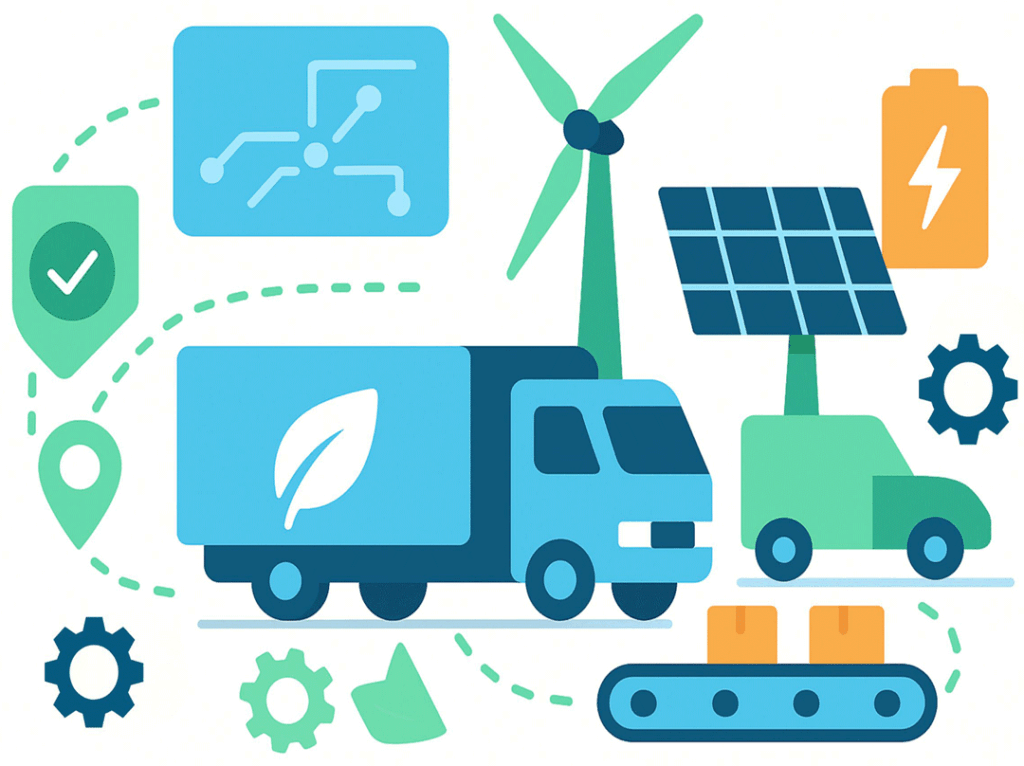4 practices to reduce the cost and environmental footprint of your information system
The growth of organizations' information systems (IS)
Comprising computers, software, servers and other IT equipment, the information system has become the heart of every business. Finance, industry, the service sector, healthcare and education all rely on an ever-growing information system. And complex.
Today, 71% of companies are experiencing difficulties with the growing volume of internal information and documents they need to manage. And every 18 months, the amount of data generated worldwide doubles. This raises issues of data storage and processing, as well as data protection legislation.
On the other hand, digitalization also has another downside: the increase in the number of devices per employee. This is partly due to our new habits: the desire for a second screen, a business smartphone and a backup server for our website. In addition, companies often over-equip with the latest equipment, whereas basic equipment is often all that's needed.
As a result, unchecked digitalization leads to higher economic costs and an increase in the environmental footprint of companies.
Substantial additional economic costs!
Here are some key figures on IT obesity in companies:
- 25% of software and applications purchased are never used. The remaining 70% are under-used. In all, 10-50% of software could be removed without harming business operations. This represents a waste of 16 billion francs a year in Europe;
- 20% of machine virtualizations are inactive or not used and 15% of servers in data centers are not used;
- the frequency of equipment replacement is increasing. In the workplace, a smartphone is replaced on average every 24 months. A computer, every 4 years. Even though they are still in very good condition.
The information system can consume up to 60% of the organization's energy.
A significant environmental impact
In the corporate world, the obesity of the information system translates as follows:
- For each individual, the environmental footprint of digital technology is the equivalent of a 1000W radiator switched on for 8 hours, 6 km by car, 27 liters of water and 197 kg of natural resources . And that's every day.
- the frequent renewal of equipment has a major impact on the ecosystem. Manufacturing a desktop computer requires 374 liters of oil, 2800 kg of raw materials, 1500 liters of water, 22 kg of chemicals and 164 kg of hazardous waste.
- Information systems can account for up to 30% of an organization's environmental footprint. And yet, over 80% of organizations have yet to measure the environmental impact of their information systems.
- 23 kg of electrical and electronic waste (WEEE) per year per person, an increase of 21% in 5 years. Yet only 20% of companies are aware of the amount of WEEE they generate.
So what's the right thing to do? There are a number of different strategies for managing information systems in order to reduce and control costs and environmental impact. One of them is digital sobriety.
Why undertake a digital sobriety strategy?
- optimizing your IS means lower energy and IT costs: up to -25% on your electricity bill and -33% on your IT budget.
- implementing a responsible purchasing policy leads to direct savings - purchase or rental of reconditioned equipment - and contributes to preserving the environment - choose equipment with environmental labels -.
- digital sobriety is based on the following principle: useful, usable, used and reusable. By applying this mantra to your entire information system, it will be optimized and therefore lighter and more economical.
- Applying digital sobriety is also a catalyst for improving your public image. Today, 46% of consumers are willing to pay more for a responsible brand.
The "Responsible Digital" label
In 1987 and 1996 respectively, the first versions of the ISO 9001 and ISO 14001 standards were published, guaranteeing a quality management system and control of the environmental impact of organizations. In 2019, the "Numérique Responsable" (Responsible Digital) label will appear, guaranteeing a demanding responsible digital approach within the organization. In my opinion, this label complements ISO 14001 and B-Corp certifications. In a VUCA (volatile - uncertain - complex - ambiguous) world, implementing a strategy of digital sobriety is no longer an option. Whether to reduce IT costs, reduce environmental footprint or improve public image.
Balance sheet
I could have concluded the article with "Organizations are digitizing and suffering". But, let's face it, you already know that. Yes, companies are suffering, but they're ready to rise to the challenge. Through my conferences and training courses, I've seen that organizations - SMEs and large groups alike - are ready to implement new strategies to do things differently. Whether watchmakers, bankers or public authorities, they all want to contribute to a more responsible future. More sober. More economical.
Now that you know what's at stake in digital business, will you take the plunge?
Sources
MOOC - Institut du Numérique Responsable
Benchmark 2021 - Green IT
Governance Report 2021 - Serda Archimag




